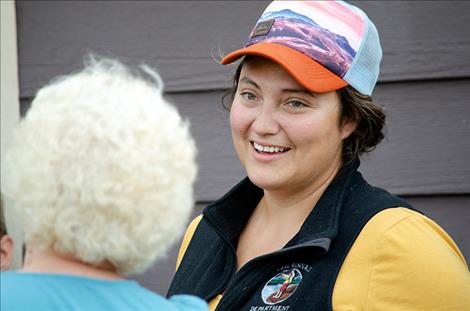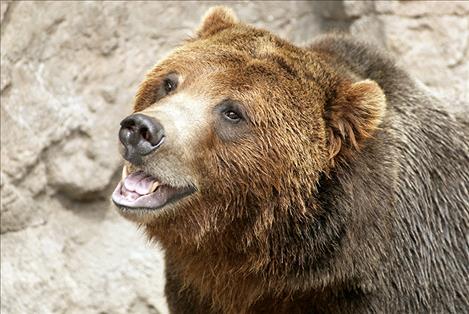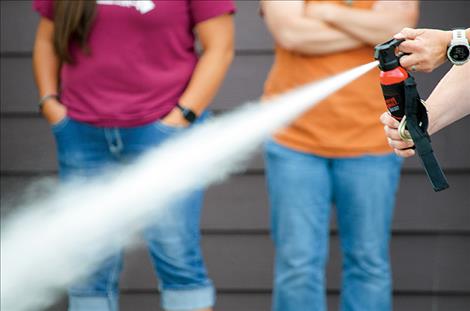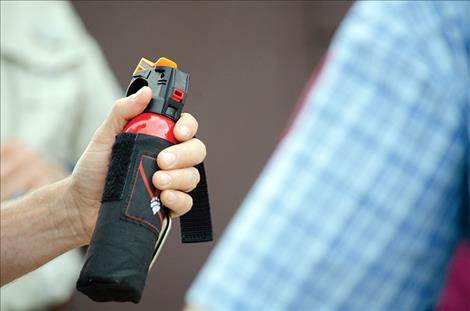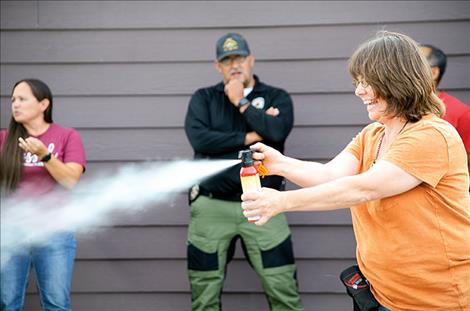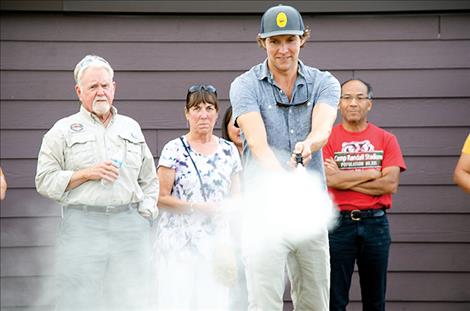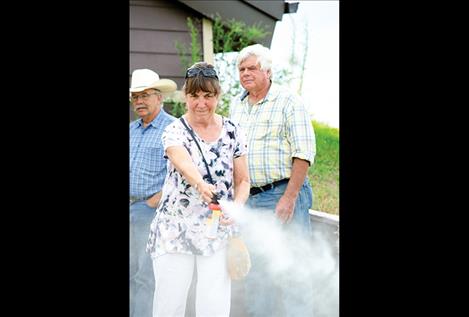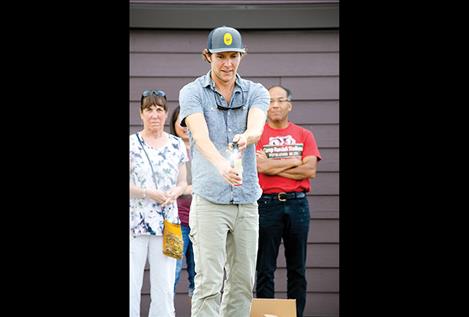Local grizzly bears could help populate other areas
Hey savvy news reader! Thanks for choosing local.
You are now reading
1 of 3 free articles.
In an effort to protect both bears and humans, People and Carnivores teamed up with the Confederated Salish and Kootenai Tribes to offer a bit of advice about how the two species can live together in the same habitat.
CSKT Wildlife biologist Kari Eneas said the Mission Valley is home to hundreds of bears. She said the tribe did a biological study and found that about 100 different grizzly bears are living in the Mission Mountain Range. Black bears are also living here.
Bryce Andrews with People and Carnivores said that what happens to grizzly bears in this area has an impact on how they thrive in other areas. “We are at the southern edge of a really big and thriving population of grizzly bears. Going north, you’ve got bears going all the way up to the Yukon. South of here, in the Bitterroot Valley, they’ve been absent for a long time. In Idaho, they’ve been absent since about 1950.”
Bear recovery efforts in this area can impact other wilderness areas. “We are on the cusp of something really interesting. Because of the good management the tribes have done here and the way the bears have responded to that management, the bears here have started to come back.”
He said the bears from this area are starting to move into other areas. “We are seeing bears making the crossing. They are crossing Interstate 90 and going into the Lolo area. They have access to the Selway-Bitterroot Wilderness, which is a huge chunk of land.”
He said the Frank Church and Selway areas have large roadless wilderness areas. “If grizzly bears make this crossing and they can get a foothold there, that’s going to be really important habitat for them in the decades and centuries to come,” he said. “What we do in this valley influences the outcome and the survival rate of the bears that make that trip and repopulate the wilderness”
People can do small things to help keep bears doing what they naturally do and out of human-created food sources like garbage cans. “This relates to the ability of bears to move from landscapes where they are thriving now to places where we want to see them,” he said.
With grizzly bears on the endangered species list, he said making sure they survive for generations to come is especially important. The way people interact with bears can mean the difference between life and death for both species, and the nonprofit group is working to help people learn how to do it.
Eneas said the CSKT Wildlife Management program collard six grizzly bears last year and tracked their behavior. They found that the bears were living around humans and livestock, so keeping bears out of those food sources is important work. “We are co-existing and living with these bears,” she said.
The trick to keeping bears and humans safe while living together is to allow the bears to do what they naturally do, which means people need to remove any potential food sources so bears don’t learn to get an easy “food reward” and become a problem as they search for more.
Andrews said: “If we give bears the chance, they will avoid trouble.” He said there are several things people can do to give bears that chance, including protecting livestock and crops, safely storing trash and removing attractants.
People and Carnivores state that as the population of grizzly bears grow, the expansion increases contact between humans and bears. “The outcomes of this contact can be influenced by our behavior. Keeping our trash and attractants clean and protected can reduce conflict.”
Since 2010 in the Mission Valley, 30 grizzly bears have been captured and handled and 19 have been killed or removed due to conflicts with chickens, pigs, goats, sheep and llamas, according to the organization.
Andrews recommends that people get bear-resistant trashcans, put electric fencing around small livestock, secure carcasses in a safe area and utilize guard dogs. “We have a program to help pay for half the cost of getting a dog,” he said. “They have been found to be highly effective. People just need to contact us and we can help.”
Keeping bears out of the crops is another issue. He said that bears love corn, and eating it derails their natural behavior. A corn diet also keeps bears close to people and causes farmers to lose crops. Putting up electric fencing has been an effective solution.
Other bear attractants include fruit allowed to rot on the ground, dog food left out on the porch, bits of food on barbeques and bird feeders. A few less obvious attractants include compost bins, gardens and anything else with a strong food smell.
“People need to make it unpleasant for carnivores to be on their property,” Eneas said, which can include making loud noises. She added that people often tell her that they don’t mind if a bear takes a chicken once in a while, but this behavior can result in more problems for the bear.
Conflicts can also occur while people are out recreating. The organization notes: “We can minimize the chances of an encounter with bears while recreating or working in the field by staying on the trail, watching for bear sign like digging, scat and overturned rocks and logs. Be sure to make your presence known by traveling in groups, talking and being extra cautious near streams and waterfalls.”
Carrying bear spray and being familiar with how to use it is highly recommended. Compared to firearms, bear spray was 92 percent effective at stopping an attack, according to the organization. Firearms were found to be 77 percent effective at stopping an attack. “It is recommended to spray 25 feet in front of you for a minimum of six seconds.”
Andrews said a charging bear can cover 20 yards in 1.33 seconds, which is about the length of three cars, so people need to have bear spray ready to use. “If you see a bear and it’s not running away from you, get your spray ready,” he said. He added that it’s better to have it out and not need it. To reduce interactions with bears, people should keep a line of sight around them and be aware of their surroundings.
To report bear conflicts or to learn more about them, including how to keep livestock safe, people can contact CSKT Wildlife Management at 406-883-2888. People and Carnivores has a website at www.peopleandcarnivores.org where more information can be found, including short films and resources.















